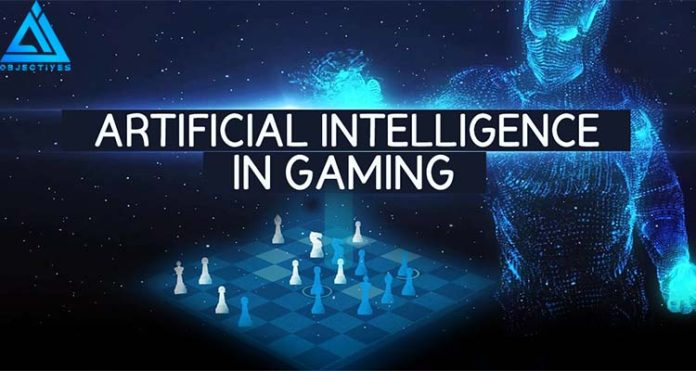
AI is Revolutionaring the Gaming Industry
The advances of modern AI research could bring unprecedented benefits to game development.
If you asked video game fans what an idealized, not-yet-possible piece of interactive entertainment might look like in 10 or even 20 years from now, they might describe something eerily similar to the software featured in Orson Scott Card’s sci-fi classic Ender’s Game. In his novel, Card imagined a military-grade simulation anchored by an advanced, inscrutable artificial intelligence.
I- What is AI(Artificial Intelligence) in Gaming?

AI in gaming means adaptive as well as responsive video game experiences facilitated through non-playable characters behaving creatively as if they are being controlled by a human game player.
From the software that controlled a Pong paddle or a Pac-Man ghost to the universe-constructing algorithms of the space exploration Elite, Artificial intelligence (AI) in gaming isn’t a recent innovation. It was as early as 1949, when a cryptographer Claude Shannon pondered the one-player chess game, on a computer. Gaming has been an important key for the development of AI. Researchers have been employing its technology in unique and interesting ways for decades.
The Mind Game, as it’s called, is designed primarily to gauge the psychological state of young recruits, and it often presents its players with impossible situations to test their mental fortitude in the face of inescapable defeat. Yet the game is also endlessly procedural, generating environments and situations on the fly, and allows players to perform any action in a virtual world that they could in the real one. Going even further, it responds to the emotional and psychological state of its players, adapting and responding to human behavior and evolving over time. At one point, The Mind Game even draws upon a player’s memories to generate entire game worlds tailored to Ender’s past.
II- The History of AI in Gaming

Back in 1992, Wolfestein 3D was released. The soldiers in that game had a rudimentary form in Artificial Intelligence. FSM or the Finite State Machine algorithm is simple. In this algorithm, designers create a list of all possible events that a bot can experience. After this, designers can assign specific responses to each situation (Lou, 2017). The developers of Wolfenstein, back in 1992, must have considered all possible situations that an enemy soldier could experience. The hero (Blazkowicz) could walk into view, he could get shot from the back, people could lose sight of him, and more. At that time, developers of the game would compile a list of these situations, and for each of them, they would tell the bot what to do.
III- AI in the Gaming Experience

Until recently, the kind of self-learning AI — namely, the Deep Learning subset of the Machine Learning revolution — that has led to advances in self-driving cars, computer vision, and natural language processing has not entirely stepped foot into the commercial game development. However, there definitely seems to exist a point in the future, when developers will gain access to these tools to create immersive and intelligent games. This could possibly result in development tools which will automate the basics of sophisticated games that are capable of changing and responding to player feedback, along with in-game characters that will evolve as more time is spent with them.
Since the early days of this medium, game developers have been programming software in such a way that it not only pretends like it’s a human, but also helps create virtual worlds without human interference from scratch. However, today, even the most boundary-pushing game design does not exactly revolve around modern AI. It rather circles around creating a set of complex systems that result in emergent gameplay. For instance, Rockstar’s hyper-realistic Western game Red Dead Redemption 2, allows players to interact with non-playable characters in a myriad of ways, eliciting different reactions depending on everything – including actions like a hat being worn or even the blood stains on it.
IV- AI in the Gaming Business

AI’s contribution to the gaming industry overpowers the sector of gaming business, rather than the gaming experience sector. Investors have realised that the gaming industry is rapidly blending with real-world experiences. Considering that the monetization opportunities of this blended world will only continue to have an upward graph, AI powered tools are being won over by them.
According to Julian Togelius, an associate professor at New York University’s department of computer science and engineering who specializes in the intersection of AI and video games – handing control over to intelligent software systems could radically shift how we think about the very nature of games. However, the most exciting element, perhaps, in the vision of the future is not just a piece of software that has taken on an artistic role in the process of building games, but also that this type of technology could create experiences so tailored to preferences that are constantly dynamic and evergreen.
Read more articles like this here.


